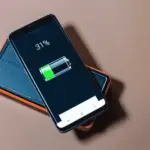New regulations force travelers to rethink how they pack electronic essentials
The Transportation Security Administration (TSA) has implemented a significant change that affects millions of travelers: portable power banks—those ubiquitous battery packs that keep our devices charged on the go—can no longer be packed in checked luggage. These devices must now be carried in cabin baggage only, marking a notable shift in air travel regulations that passengers worldwide need to understand.

This regulatory update comes amid mounting concerns about the safety risks posed by lithium-ion batteries in the cargo hold of aircraft. For frequent flyers and occasional travelers alike, understanding these new restrictions is crucial to avoid disruptions at security checkpoints and ensure compliance with evolving air safety standards.
The New Regulation Explained
The TSA’s latest directive specifically targets power banks and portable chargers containing lithium-ion batteries, prohibiting them from being transported in checked baggage on all flights departing from or arriving at U.S. airports. While these devices remain permitted in carry-on luggage, the restriction represents an important development in aviation safety protocols.
The change aligns the U.S. with international regulations established by the International Civil Aviation Organization (ICAO) and follows similar measures already implemented by aviation authorities in other regions. The ban extends to all portable charging devices regardless of their capacity, brand, or size, creating a clear-cut rule that eliminates previous ambiguities around which specific models were allowed in checked baggage.
Passengers should note that this prohibition differs from regulations governing standard consumer electronics like laptops, smartphones, and tablets, which can still be packed in either checked or carry-on luggage. The distinction lies in the specific classification of power banks as spare batteries rather than complete electronic devices.
Why Lithium Batteries Pose Unique Risks in Air Travel
The core issue driving this regulatory change centers on the inherent risks associated with lithium-ion battery technology when subjected to the environmental conditions present in aircraft cargo holds. These batteries, while revolutionary for powering modern electronics, contain flammable electrolytes and can enter what safety experts call “thermal runaway”—a dangerous chain reaction where internal battery temperature rises uncontrollably.
The Federal Aviation Administration has documented over 600 incidents involving lithium batteries on aircraft between 2006 and 2025. These incidents range from minor smoking devices to severe fires capable of causing significant damage to aircraft systems and endangering passenger safety.
What makes the cargo hold particularly problematic is the combination of pressure changes, temperature fluctuations, and—most critically—the absence of immediate human intervention if a battery begins to malfunction. In the passenger cabin, crew members can quickly respond to a smoking or overheating device, employing fire containment procedures before a situation escalates. The same rapid response is impossible with items in checked baggage.
Additionally, fire suppression systems in cargo holds, while effective against conventional fires, may not adequately contain the intense, self-sustaining fires that lithium batteries can produce. These fires generate their own oxygen supply, making them resistant to standard suppression methods and particularly dangerous in the confined space of an aircraft.
The January Incident That Accelerated Regulatory Action
While concerns about lithium battery safety have circulated within aviation circles for years, a high-profile incident in January 2024 brought renewed urgency to the issue and likely accelerated the TSA’s decision to implement stricter regulations.
On Air Busan flight BX391, preparing for departure with 170 passengers on board, a fire erupted in an overhead compartment. Preliminary investigations pointed to a portable battery pack as the likely source of the blaze. Though the aircraft was still on the ground and evacuation procedures were immediately initiated, several passengers sustained injuries, and the aircraft itself suffered extensive damage.
This incident proved particularly influential because it demonstrated how quickly a battery malfunction can escalate, even with immediate access to emergency services on the ground. Following this event, several Asian carriers including Air Busan, Eva Air, and China Airlines implemented restrictions on the use of portable charging devices during flights—a precautionary measure that highlighted growing industry concern.
The Air Busan incident represents one of several high-profile cases that have shaped aviation safety policy regarding lithium batteries. In 2016, Samsung’s Galaxy Note 7 was famously banned from flights altogether after multiple reports of batteries catching fire, establishing a precedent for swift regulatory action in response to demonstrated safety threats.
Impact on Global Travelers
The TSA’s decision affects not just American travelers but passengers from around the world who transit through or visit the United States. For international travelers accustomed to varying regulations across different countries, this standardization provides clarity but may require adjustments to packing routines.
For business travelers who rely heavily on portable power for extended trips, the new regulations necessitate careful planning to ensure all charging equipment remains accessible during the flight. This may present challenges particularly for those who prefer to minimize their carry-on items or who travel with multiple high-capacity power banks for professional equipment.
Leisure travelers, particularly those embarking on adventures to remote destinations where power sources are unreliable, will need to balance their power needs with the limitations of what can be carried in cabin baggage. The restriction could be especially impactful for travel photographers, videographers, and outdoor enthusiasts who depend on multiple backup power sources for their equipment.
Families traveling with children—who often rely on charged devices for entertainment during long flights—may need to reconsider how they distribute electronics and charging accessories among their luggage, potentially adding complexity to an already challenging travel experience.
Broader Industry Trends in Battery Safety
The TSA’s decision represents part of a larger trend in the aviation industry toward increased scrutiny of lithium battery technologies. As consumer electronics have proliferated and battery capacities have increased, regulatory frameworks have evolved to address emerging safety concerns.
Manufacturers of power banks and portable charging devices have responded to these concerns by implementing improved safety features, including advanced thermal management systems, overcharge protection circuits, and more robust casings designed to contain potential failures. However, the inherent risks of the technology remain, particularly when accounting for counterfeit products that may lack these safety features.
Major industry standards organizations, including the Institute of Electrical and Electronics Engineers (IEEE) and Underwriters Laboratories (UL), continue to refine testing protocols and safety standards for lithium-ion batteries. These efforts aim to enhance the baseline safety of products entering the market, but the aviation environment presents unique challenges that even well-designed products must address.
Some airlines have gone beyond regulatory requirements by implementing their own restrictions, such as limiting the maximum capacity of power banks allowed on board or requiring passengers to store these devices in specific fire-resistant bags during flight. These measures reflect the industry’s proactive approach to managing evolving safety challenges.
Navigating Security Checkpoints Under the New Rules
For travelers, understanding how to comply with the new regulations is essential for smooth passage through security checkpoints. TSA agents are now specifically trained to identify power banks during the screening process, and those found in checked luggage will be removed, potentially causing delays and complications for travelers.
When approaching security, travelers should place power banks in screening bins alongside other electronic devices for X-ray inspection. TSA agents may request additional screening of these items, including physical inspection or specialized testing to verify their nature and condition.
An important distinction that may cause confusion is the difference between power banks and regular chargers. Wall adapters and charging cables without integrated batteries remain permissible in both carry-on and checked luggage. The restriction specifically targets devices with their own battery capacity, designed to store energy for later use.
Another potential area of confusion involves the difference between standard power banks and newer solar chargers or specialized battery packs that may not visually resemble conventional models. The determining factor remains the presence of a lithium-ion battery component, regardless of the device’s overall design or secondary features.
International Variations in Regulation
While the TSA’s policy aligns with international guidelines, travelers should be aware that implementation and enforcement vary across different countries and airlines. Some jurisdictions have implemented capacity-based restrictions rather than outright bans, allowing smaller power banks in checked luggage while prohibiting larger ones.
In the European Union, regulations broadly mirror the U.S. approach, requiring all spare batteries and power banks to be carried in the cabin. However, specific member states may interpret or enforce these rules differently, creating potential inconsistencies for travelers on multi-country itineraries.
Asian carriers have been particularly proactive in battery safety following several high-profile incidents in the region. Countries including Japan, China, and South Korea have implemented strict controls on lithium battery transport, with some requiring specific documentation or registration for higher-capacity devices.
These international variations create a complex regulatory landscape for global travelers. The safest approach remains carrying all power banks in cabin baggage regardless of destination, as this practice satisfies the strictest interpretation of rules across most jurisdictions.
Practical Alternatives for Travelers
As travelers adjust to the new normal of keeping power banks out of checked luggage, several practical approaches can help manage electronic power needs while complying with regulations.
For those concerned about carry-on space and weight limitations, the market has responded with increasingly compact high-density power banks that offer substantial charging capacity in smaller form factors. These devices can provide multiple full charges for smartphones while occupying minimal space in a personal item or carry-on bag.
Another approach involves transitioning to destination-based charging solutions. Rather than carrying multiple power banks, travelers can invest in fast-charging wall adapters that can rapidly replenish devices during layovers or upon arrival. This strategy reduces the need for in-flight charging while still ensuring power availability throughout a journey.
Some frequent travelers have adopted battery cases for smartphones and other devices—protective cases with integrated battery backup. These products blur the line between device and power bank but are generally classified as electronic devices rather than spare batteries, potentially offering a regulatory workaround, though travelers should verify the specific classification with their airline.
For extended trips where power needs exceed what can reasonably be carried in cabin baggage, shipping power banks to a destination in advance represents an alternative, albeit one that requires advance planning and additional expense.
The In-Flight Charging Dilemma
While the new TSA regulations address the transport of power banks, a related but separate question involves their use during flights. Currently, U.S. airlines generally permit passengers to use portable chargers while airborne, though policies vary by carrier and may be subject to flight crew discretion.
This relatively permissive approach contrasts with the more restrictive policies implemented by some international carriers, particularly following the Air Busan incident. Several Asian airlines now explicitly prohibit the use of portable charging devices during flight, requiring passengers to rely solely on onboard power outlets if available.
Aviation safety experts continue to debate the optimal approach to in-flight use of power banks. While the risks associated with active charging in the cabin are significantly lower than those in the cargo hold due to the presence of attentive crew members, some argue that a more cautious stance may be warranted given the potential consequences of even rare incidents.
The availability of in-seat power outlets on modern aircraft has reduced but not eliminated the need for portable charging during flights. Many older aircraft and economy cabins on international routes still lack adequate charging facilities, creating a continued reliance on portable power sources for many travelers.
The Role of Technology Development
Looking beyond immediate regulatory changes, the portable power dilemma highlights the broader challenges of balancing technological advancement with safety considerations. As consumer demand for longer-lasting portable power continues to grow, manufacturers face pressure to develop higher-capacity solutions that inevitably contain more energy—and therefore present greater potential risks if they malfunction.
Research into alternative battery chemistries represents one promising avenue for addressing these challenges. Solid-state batteries, which replace the flammable liquid electrolytes found in conventional lithium-ion cells with solid alternatives, offer the potential for significantly reduced fire risk while maintaining or improving energy density.
Similarly, lithium iron phosphate (LiFePO4) batteries provide inherently greater thermal stability than traditional lithium-ion formulations, though typically at the cost of somewhat lower energy density. These technologies are gradually entering the consumer market but have yet to displace conventional lithium-ion in mainstream portable devices.
For the aviation industry, the development of specialized containment devices designed specifically for lithium battery fires represents another technological response. These products, ranging from simple fire-resistant pouches to sophisticated containment cases, provide additional protection beyond regulatory requirements for safety-conscious travelers.
Consumer Awareness and Education
A critical component of addressing battery safety concerns involves improved consumer education about proper handling and usage of lithium-powered devices. Many battery incidents stem from preventable factors such as physical damage, exposure to extreme temperatures, use of incompatible charging equipment, or purchase of counterfeit products lacking adequate safety features.
Airlines and regulatory agencies have increased efforts to communicate safety guidelines through pre-flight briefings, in-flight magazines, and airport signage, but research suggests many travelers remain unaware of best practices for battery safety. Simple measures such as preventing devices from overheating, avoiding charging unattended, and inspecting batteries for damage can significantly reduce risk.
Identifying counterfeit power banks represents a particular challenge for consumers, as these products may closely resemble legitimate devices while lacking critical safety protections. Warning signs include unusually low prices, inconsistent build quality, and capacity claims that exceed what’s technically possible in a given size—a 10,000mAh battery claiming to be the size of a lipstick, for instance, should raise immediate suspicion.
The TSA’s decision to ban power banks from checked luggage represents one adjustment in the constantly evolving relationship between technology and travel. For frequent flyers, adapting to these changes has become part of the modern travel experience, requiring flexibility and awareness of shifting regulations.
The power bank restriction joins other technology-related travel adaptations that have emerged in recent years, from restrictions on larger electronic devices on certain routes to evolving policies on the use of Bluetooth and wireless devices during various phases of flight. Each change requires passengers to recalibrate their expectations and packing strategies.
What remains constant amid these changes is the fundamental priority of passenger safety. While new restrictions may initially appear inconvenient, they typically respond to identified risks based on real-world incidents and scientific understanding of potential hazards.
For travelers navigating these shifting requirements, staying informed through official sources represents the most reliable approach. The TSA’s official website and app provide current information on permitted and prohibited items, while airline-specific policies can usually be found through carrier websites or customer service channels.
The prohibition of power banks in checked luggage ultimately reflects the aviation industry’s cautious approach to emerging safety challenges. By restricting these devices to cabin baggage, regulators have implemented a measured response that balances safety imperatives with practical considerations for modern travelers.
While adjusting to the new normal may require some rethinking of packing strategies, the core functionality that power banks provide—keeping our essential devices charged during travel—remains available to passengers willing to carry these items in their cabin baggage. The minor inconvenience of reorganizing where these devices are packed pales in comparison to the potential consequences of an uncontained battery fire in an aircraft’s cargo hold.
As battery technology continues to evolve and aviation safety practices adapt accordingly, we can expect further refinements to these regulations. The goal remains consistent: harnessing the benefits of portable power while minimizing the associated risks in the uniquely challenging environment of air travel.
In the meantime, travelers would do well to familiarize themselves with current requirements, plan accordingly, and remember that these regulations, however inconvenient they might sometimes seem, serve the essential purpose of ensuring we all reach our destinations safely.



